Conventional wisdom says own-label goods are the unglamorous, low-rent cousins of the all-singing, all-dancing and all-conquering consumer brands.
Yet the recent disruption to UK grocery has affected suppliers and retailers in myriad ways, and one of the most significant is that the rules around unbranded players have been rewritten. We are now living in the era of own label.
Own-brand suppliers are growing over three times faster than branded suppliers, largely because the sector has been better able to navigate around the roadblock of the price war and collapsing traditional supermarket sales.
That collapse is partly responsible for The OC&C Grocer Index 2015 painting a downbeat picture, where the woes of the supermarkets are splashed all over the canvas.
The annual rate of revenue growth across the Top 150 dipped to 2.9% - well below the long-term average growth rate of 4.2% and a big drop from last year’s 5.8% growth. Profitability also remains squeezed - with margins remaining flat at 5.3%, well below the long-term average of 6.4% and bumping along at their lowest levels for 30 years.
So far, so grim. But there are pockets of light amid the gloom - not least that wider consumer expenditure has been on the rise since 2012 and disposable incomes are seeing a sharp recovery so far in 2015.
Although the somewhat historic nature of the Food & Drink 150 - collated from the most recently published annual figures of the UK’s top suppliers - means the impact of improving sentiment and an apparent uptick in volumes have yet to be fully felt, some notable themes can be seen in the figures as the market gets to grips with the booming discounters, the growing power of convenience and online, and the fragmentation of traditional shopping habits.
Most obvious is the effect discounter growth and the supermarkets’ quest for differentiation has had on the balance between own label and brands.
Underlying growth (stripping out M&A) among own-label producers was 4.1% - down slightly on last year’s 4.4% growth, but dwarfing the anaemic 1.1% growth of branded suppliers (2.9% in last year’s index).
The gap becomes even more stark when it includes the impact of M&A - with own-label firms growing 5.9% while branded suppliers saw revenues fall 0.4% as own-label suppliers looked to expand footprints and branded firms shed non-core assets.
The trend is personified by predominantly own-label supplier Boparan, the new no 1 on the 2015 list, overtaking branded supplier Associated British Foods, driven by a string of acquisitions that raised revenues from £838m in 2010 to £3.36bn.
Need to prioritise own label
“Discounters, particularly Aldi, are changing perception around private label and the trade-off between value and quality,” says David Oliver, head of retail consulting at PWC. “But across retail, not just grocery, it has become harder to make money selling branded products because without the ability to differentiate on product and quality you are left with just price to compete on”.
“Retailers are running out of steam with operational efficiencies and cost savings,” says EY operation transaction service partner John Clark. “You can’t keep saving costs to get more profitable, so to increase profitability you need to reduce your SKU range and prioritise own label.”
The market for own label has advanced significantly in recent years, with “a lot of disrupters in the marketplace who can pick up the phone and speak with a manufacturer anywhere in Europe and do a deal to make anything they want,” adds Clark.
The own-label heavy product offer of the discounters has helped tip the market balance in the direction of non-branded suppliers, but the premium end of the market has provided a similar impetus. M&S, as an almost 100% own-label operator, has been able to protect margin and sales values more effectively than premium-focused rival Waitrose, which has been dragged into the branded pricing battle.
However, it’s not a simple case of ‘branded bad, non-branded good’. Own-label margins remain significantly tighter than their branded counterparts. Operating margins for own-label players edged up from 2.9% to 3% this year, but still way behind the 7.8% margins boasted by brands.
And while smaller, more nimble branded operators continue to outmanoeuvre their larger rivals, tapping areas of growth more effectively and maintaining their 8.5% margin (while larger branded suppliers saw margins of only 7.5%), the picture is reversed for own-label suppliers. Large (over £500m turnover) own-label business grew margins from 2.9% to 3.2% whilst smaller own-label suppliers saw margins edge down from 2.9% to 2.7%. Conversely, smaller branded suppliers maintained their 8.5% margins, while larger branded suppliers saw margins contract from 8.1% to 7.7%.
“Own-label suppliers have fewer points of differentiation than branded, so their scale translates into bargaining power and the opportunity to get efficiencies and invest in new products,” OC&C’s head of consumer goods Will Hayllar explains. “Smaller own-brand suppliers are more at the whim of the supermarkets.”
The advantages small branded suppliers can leverage from distinctive innovation are lessened in own label as the category tends to focus more on fresh and staples, where innovation is harder to scale up and less value is put on NPD.
All the same, investment in innovation has helped underpin the growth of own-label suppliers - with investment enabling them to engineer products to meet consumer demand in growing categories such as convenience and food to go.
Alan Gibson, UK & Ireland director of Moy Park, the growing poultry supplier snapped up by Brazil’s JBS this year, says: “For us to grow, we have to play in those parts of the market that are growing. Sales channels like online and convenience are the vehicles of retailers, but it’s incumbent on us to understand what they mean for us and what we can do to make our products more attractive.”
Adelie is another strong own-label business that has taken advantage of the growing foodservice sector, cutting SKUs and focusing NPD on a smaller range of food-to-go categories. “We have scale, but the ability to move quickly on ideas has been a real strength,” says group commercial director John Hyman.
Agility has been equally important on the branded side. “When you’re on trend you have to be pretty nimble and dynamic,” concurs Sue Garfitt, UK commercial director at Alpro, which has pushed innovation in the growing free-from space.
At the same time, brands need courage in their convictions. “Brands that have made the investment into innovation during the lean times will capture a disproportionate amount of the growth over the coming years,” believes Innocent Drinks CEO Doug Lamont.
Capital expenditure
These are not isolated examples. Despite historically tight margins overall capital expenditure across the Top 150 has risen by 18% year-on-year to £2bn partly as suppliers invest in improving long-term efficiencies, but also recognising new opportunities.
“Businesses are putting in more capital to generate the same levels of profit,” OC&C’s Hayllar observes, with a focus on new products and pack flexibility to suit different shopping channels.
Although the increase in overall capex is higher in own-label and smaller branded companies, large branded suppliers are the heaviest investors in capex as a percentage of revenues.
And there could be more to come.
“Having gone through the credit crunch, streamlined efficiencies and been pretty cautious about what they’re spending through the turbulence, a reasonable number of businesses now have quite healthy balance sheets and have the capacity to invest,” adds Hayllar.
Alpro’s Garfitt, for example, talks of the importance of close retailer relationships to “bring the wider category more to the fore”, while Heinz’s Kruise says it has a “big role to play in helping our customers react to current changes” and bring inspiration back to the supermarket shop floor.
Turning on the investment tap also applies to the workforce, with the Top 150 employing 5,000 more people (driven by own-label suppliers) over the past year as the total workforce reached 300,000. Staff costs have grown by 3% per employee and are up by 6% in absolute terms as wages increased and jobs were upskilled.
Yet suppliers will expect material returns on increased investment, and currently the return on capital employed (ROCE) of the Top 150 is down 0.8% year on year to 14.2% while revenue productivity (revenue per employee) remained flat. Both figures are hugely impacted by the deflationary picture in the UK - driven by discounter growth, the supermarket price war and weak commodity inflation.
UK-centric food and beverage price deflation has encouraged UK producers increasingly to look overseas for growth. International sales accounted for 16.7% of total revenues from 16.2% last year - with Innocent and R&R Ice Cream among the most successful as they grew their sales from international markets by 5.1% and 4.3% respectively. The somewhat slow pace of overall change is illustrative of the lengthy journey to grow exports.
“All the indications of activity in the marketplace show firms are making a sustained effort to grow their international sales mix – particularly some of the more differentiated mid-sized businesses,” Hayllar says. “But export is not a quick win and it takes years to build relationships, adapt products and build consumer relationships before you see significant growth.”
And it doesn’t help that a 17% fall in the value of the euro against the pound over the past two years has dragged down UK food and drink exports by 5.3% in the first half of 2015, even though the volume picture was largely positive.
“Often in the exporting world you hear ‘Where are the Brits’?” says FDF’s economics & commercial services director Steve Barnes. “We’re behind our European peers in the volumes we’re exporting as a percentage of our total industry. The long-term opportunity for branded manufacturers and British producers is immense and we have the headroom to do a lot more.”
Still, for many exports must remain on the roadmap. “Exporting is a necessity for us not an optional extra,” Moy Park’s Gibson says.
“We have to export those parts of the chicken that aren’t consumed in the UK, but at the moment it’s our biggest challenge because international markets are extremely difficult.”
Even as the traditional value of scale erodes export is one area where it may prove a long-term benefit. Gibson talks of the benefits of global networks to be able to start the process of opening networks, while Innocent’s Lamont adds: “We’re able to take a 10-year view as a relatively small but growing part of a much larger business. We’re consciously not cutting back on marketing as we’re committed to continuing to strengthen the brand across Europe to deliver consistent long-term growth.”
The potential for globalising UK products is one of the primary reasons behind a number of recent investments in UK suppliers, including JBS’s investment in Moy Park, Yildiz’s £2bn buyout of United Biscuits, and Hain Celestial’s acquisition of Tilda.
M&A as a whole was unchanged in deal number and deal value from the 2014 Top 150 index, but a notable uptick occurred in 2015. Activity this year - including Nomad’s acquisition of Iglo and Baring Private Equity’s investment in Weetabix - has already outstripped 2014 in value terms, worth £3.1bn against £2.8bn last year. Although there are sporadic private equity deals, interest remains predominantly from other industry players seeking consolidation.
“There is still a lot of value to be had from M&A,” says Birds Eye UK MD Andy Weston-Webb. “Food is a relatively unconsolidated sector and if you have a good operating platform and real focus the M&A case can be very powerful.”
That many trade buyers are from outside the UK suggests “a recognition that there are some pretty valuable UK assets if international players are thinking long-term about building businesses,” Hayllar says.
Experienced fmcg board director and Adelie chairman Per Harkjaer thinks the risk of entering the UK food space is “relatively limited” if buyers are selective. “If you can find the pockets of growth, it’s a very attractive space to be in,” he says.
Attractive isn’t a word that’s been bandied about the UK grocery market in recent years, but there are genuine chinks of light emerging. Those players who are operating within those pockets of growth are thriving, while the rest of the industry is no longer slashing and burning. Instead it has stabilised and is spending to catch up. As Hayllar says, companies are having to work harder to stand still - the next challenge is getting on the front foot again.
That will require a huge collective effort with retailers on complementary strategies.
If there is an irony, it’s in the fact that branded suppliers are increasingly trying to ape private-label approaches by working more closely alongside selected retailers – as Charlie Bigham’s has with Waitrose for example – to drive mutually beneficial value rather and category growth.
Alpro’s Garfitt agrees in the importance of close retailer relationships to “bring the wider category more to the fore”. Heinz’s Kruise says it has a “big role to play in helping our customers react to current changes” and bring inspiration back to the supermarket shop floor.
“Branded suppliers are having to think more intelligently about helping retailers with their growth strategies,” says EY’s Clark. “Historically it has always been a bit of an antagonistic relationship, but now you’re now seeing a nicer balance come through and new styles of working together on combined growth strategies.”
On the right track: top five performers

Moy Park
Turnover: £1,201m (+10.5%) ● Operating margin: 3.4% (+0.8ppts)
The Northern Irish branded and own-label supplier has upped volumes from UK grocers and foodservice customers, ranging from McDonald’s to small independent chains, while investing in factory efficiencies and NPD, including food-to-go ranges and the first roast in a bag chicken. It is also plotting significant overseas expansion, with a £170m four-year investment plan to improve exports, after it was recently Snapped up by Brazilian meat giant JBS for £945m in June 2015.
McCain
Turnover: £445m (+6.8%) ● Operating margin: 12.1% (+4.5ppts)
McCain’s revenues have been steadily growing through the economic downturn, climbing from £358m in 2010. As profitability has returned to more normal levels following the 2013 UK potato shortage, a £35m marketing plan featuring Film4 sponsorship and new scented supermarket displays in Tesco and Asda has combined to drive growth with dynamic NPD including such as low-salt and low-fat French fries and breakfast-focused hash brown substitute Breakfast Dejeuner.
Ferrero
Turnover: £260m (+22.3%) ● Operating margin: -1.3% (-0.5ppts)
Ferrero’s concentration on the growing premium chocolate space has enabled it to grow annual revenues by over 20% and is on track to double UK revenues over the next five years. It has already grown its share of the overall UK chocolate market to 3.3%. With continued investment in core brands like Nutella (up 15%) and the 2013 launch of Kinder Kids, Ferrero has achieved compound annual growth of 17.1% since 2011 - while Nestlé’s market share is down 1.2% over that time and Mondelez has crept up 2.9%. UK revenues will soon double thanks to Ferrero’s takeover of Thorntons this summer.
Adelie
Turnover: £256m (+19.1%) ● Operating margin: 4.0% (+2.6ppts)
Adelie has tapped into the boom in the UK food-to-go sector to grow into one of the leading players in the category and drive solid top and bottom line growth. It has grown in both the own-label and branded food-to-go arenas, with 50% of sales from foodservice and coffee shops and Urban Eat becoming the biggest sandwich brand in the UK. Its scale makes it stand out - a distribution network delivering 364 days a year - while it has remained resolutely focussed on sandwiches and other bread products. And in March it was acquired by HIG Capital, with its new owners eyeing international growth.
Alpro
Turnover: £107m (+19.5%) ● Operating margin 4.2% (+0.4ppts)
Alpro was one of the earliest exponent of “free-from” explosion, growing in the UK by an average 7.4% annual rate until last year’s near-20% revenue jump, as health and environmental concerns intensified. Diversifying from soya to coconut and hazelnut products, it also introduced smaller pack sizes and re-sealable drink cartons to expand from being an overwhelmingly in-home brand. In March 2015, Alpro outlined plans to invest £29m in upscaling UK operations by increasing capacity. Its dominant position in the milk substitute category (boasting a 59% share) means it is well positioned to benefit from continued growth of non-dairy alternatives.
UK-based dealmaking
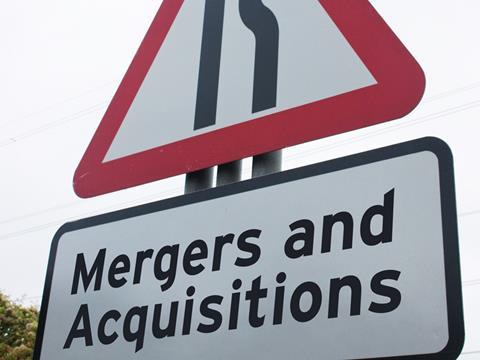
United Biscuits
Buyer: Yildiz Holding ● Value: £2bn
Former owners Blackstone Group and PAI ran a dual-track process to either list or sell UB. In the event it plumped for the £2bn offer from Turkey’s Yildiz, which beat off international trade competition. The deal made Yildiz the world’s third-largest biscuit player.
Tilda
Buyer: Hain Frozen Foods UK ● Value: £217m
Fast-growing rice brand Tilda became part of US food group Hain Celestial, the owner of New Covent Garden Soup and Ella’s Kitchen, in January 2014. The new owners plan to grow the brand via United States, Canada and Europe.
SAB Miller
Buyer: Coca-Cola ● Value: £165m
As part of the deal to combine the bottling operations of SAB Miller and Coca-Cola in Africa, Coke acquired SAB Miller’s sparkling soft drink Appletiser brands globally, and 19 other non-alcoholic brands in Africa and Latin America.
Dairy Crest
Buyer: Müller UK & Ireland ● Value: £80m
Dairy Crest agreed a deal to sell off its loss-making milk operations in November 2014. The deal is yet to be approved by UK competition regulator the CMA, but in August it proposed to accept Müller’s undertakings to allay competition concerns. So it’s only a matter of time.
Benecol UK
Buyer: Rasio Group ● Value: £71m
Finnish food group Raisio has acquired the rights to cholesterol-lowering food brand Benecol in the UK, Ireland and Belgium from Johnson & Johnson subsidiary Cilag. Raisio owns the Benecol brand but is now buying back international licences it divested from 1997.
Total M&A= £2.8bn (from 10 deals, worth more than £20m)








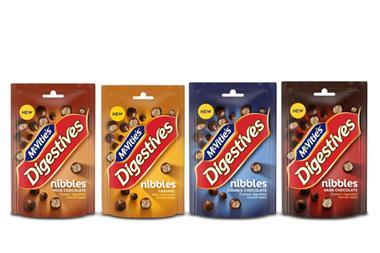
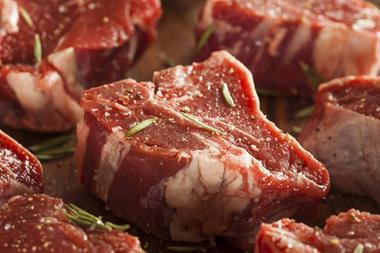


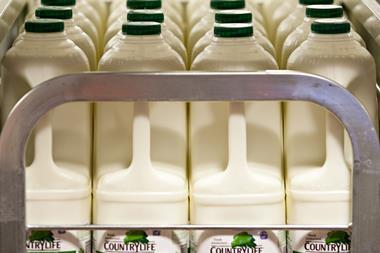
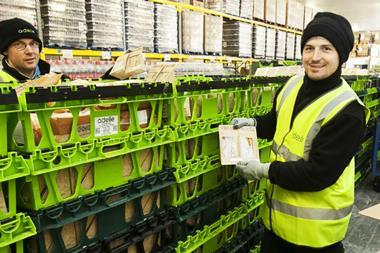






No comments yet